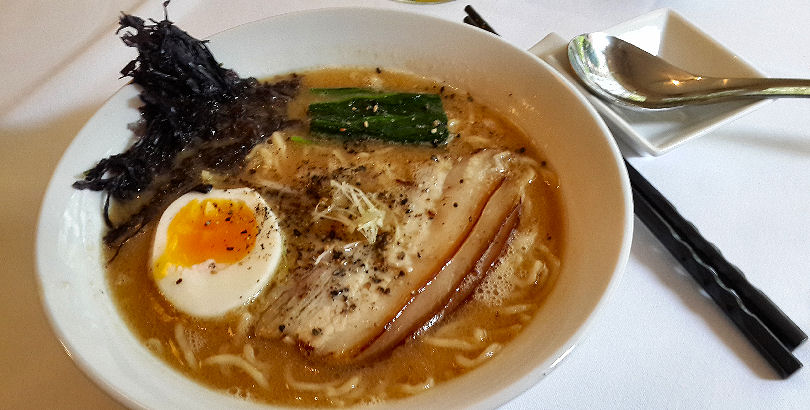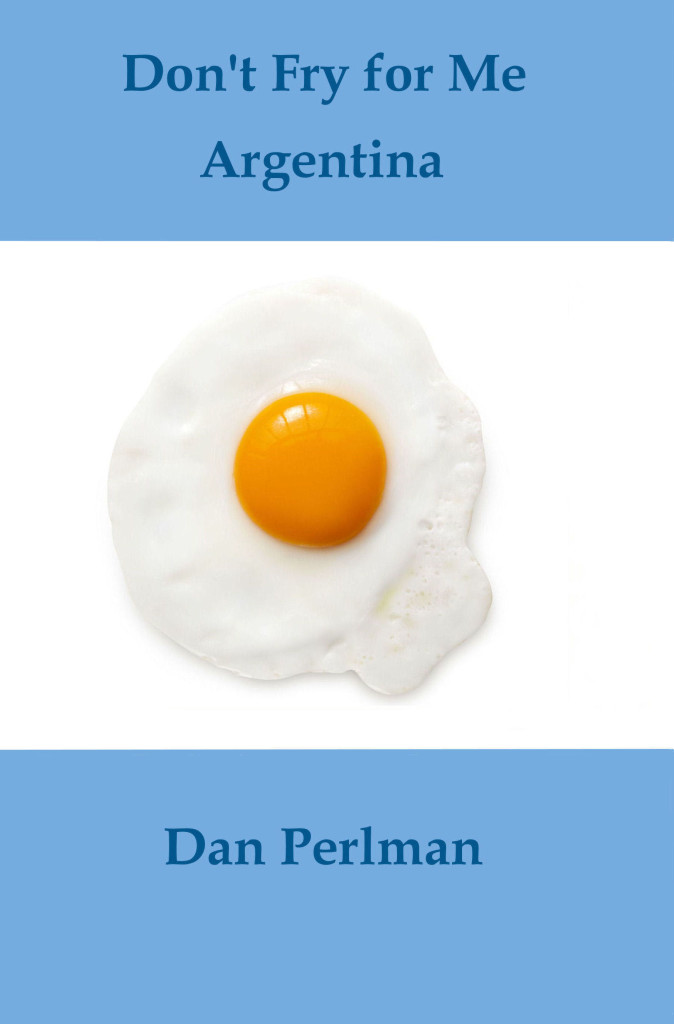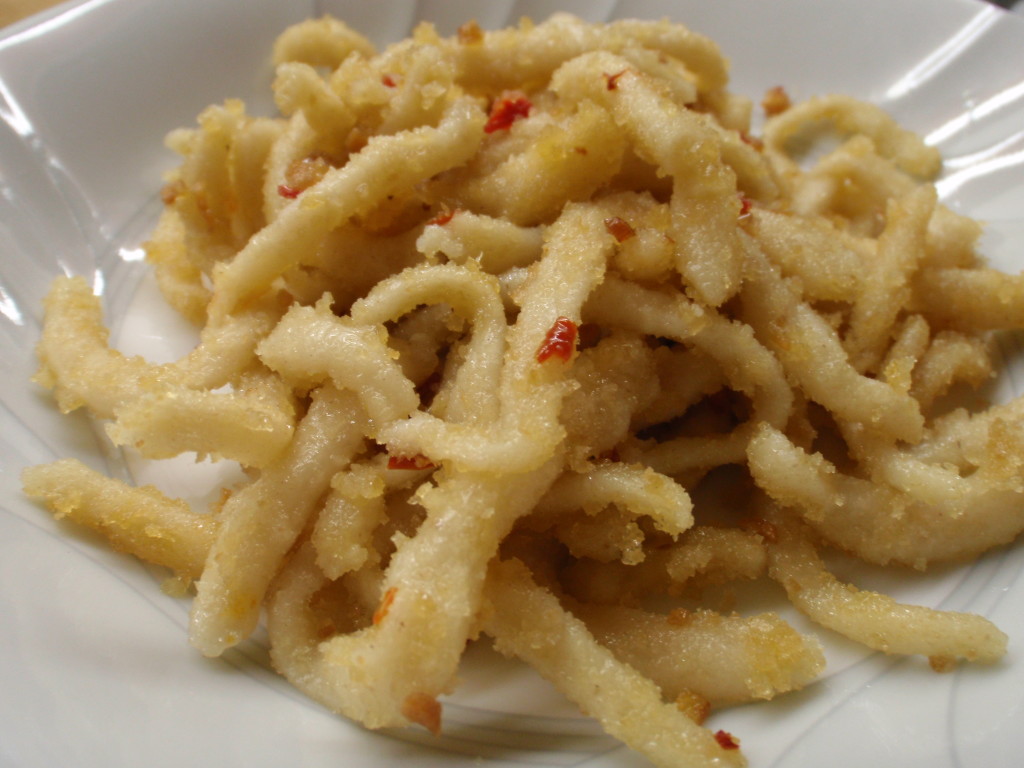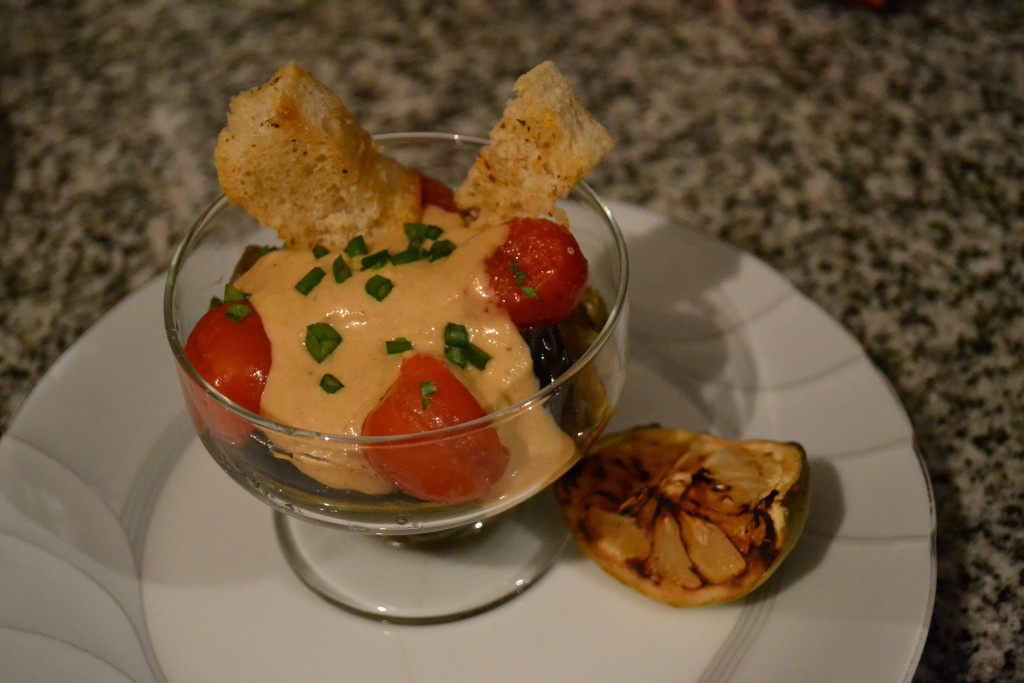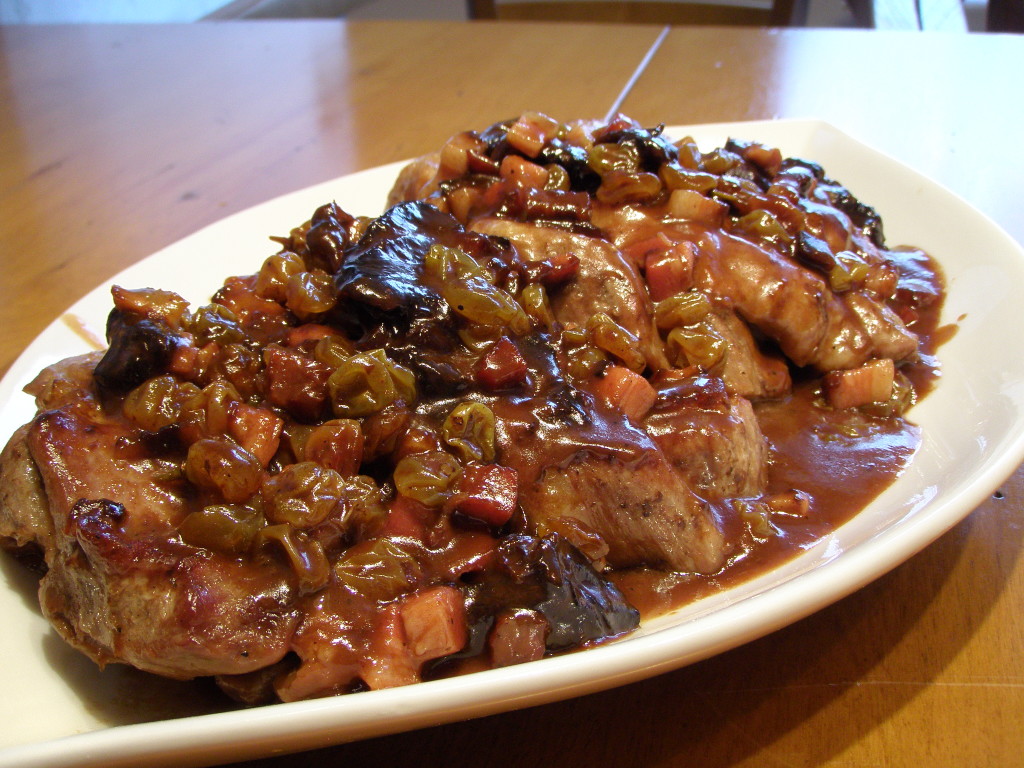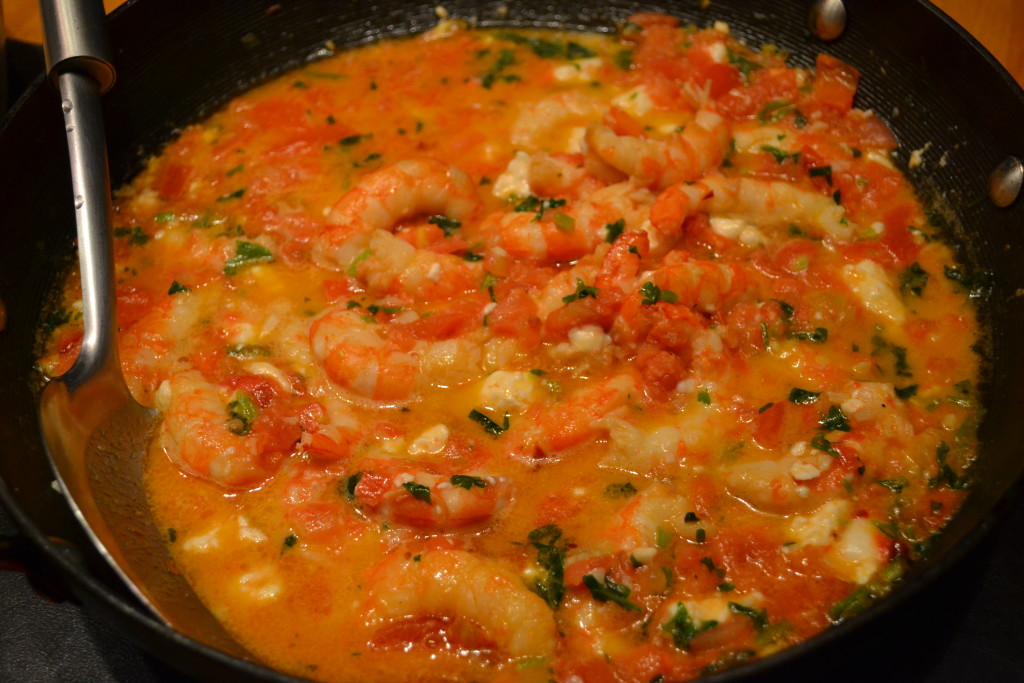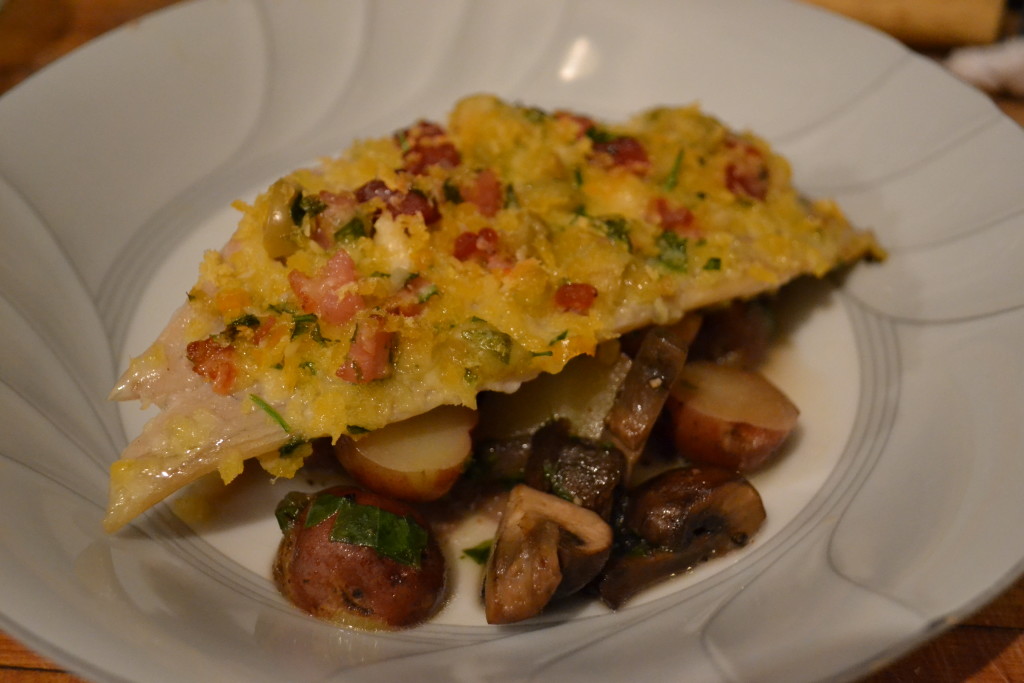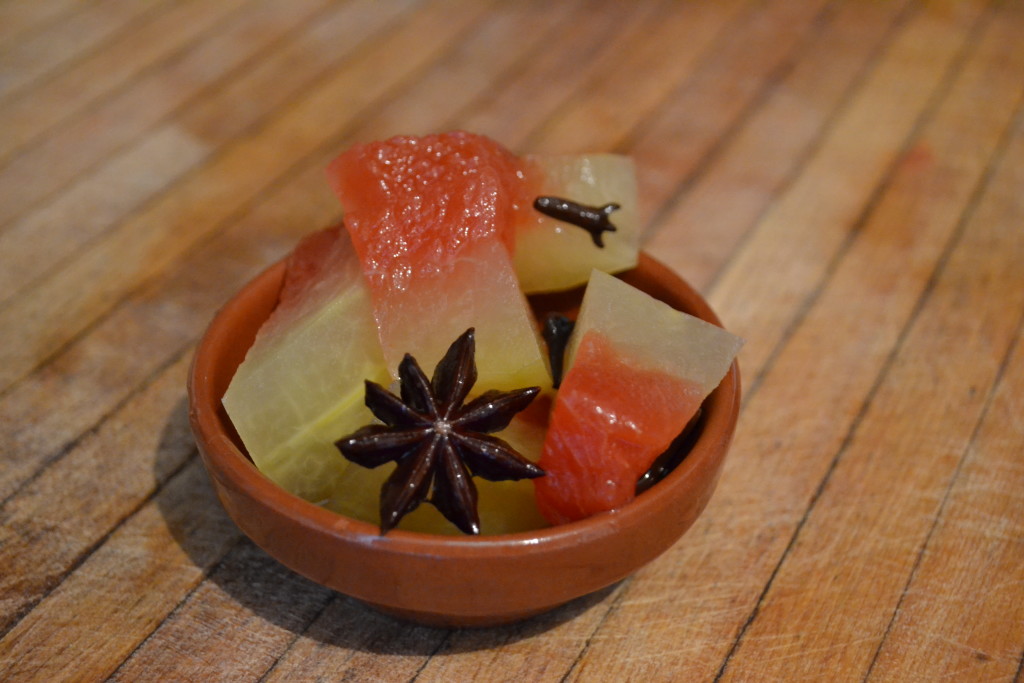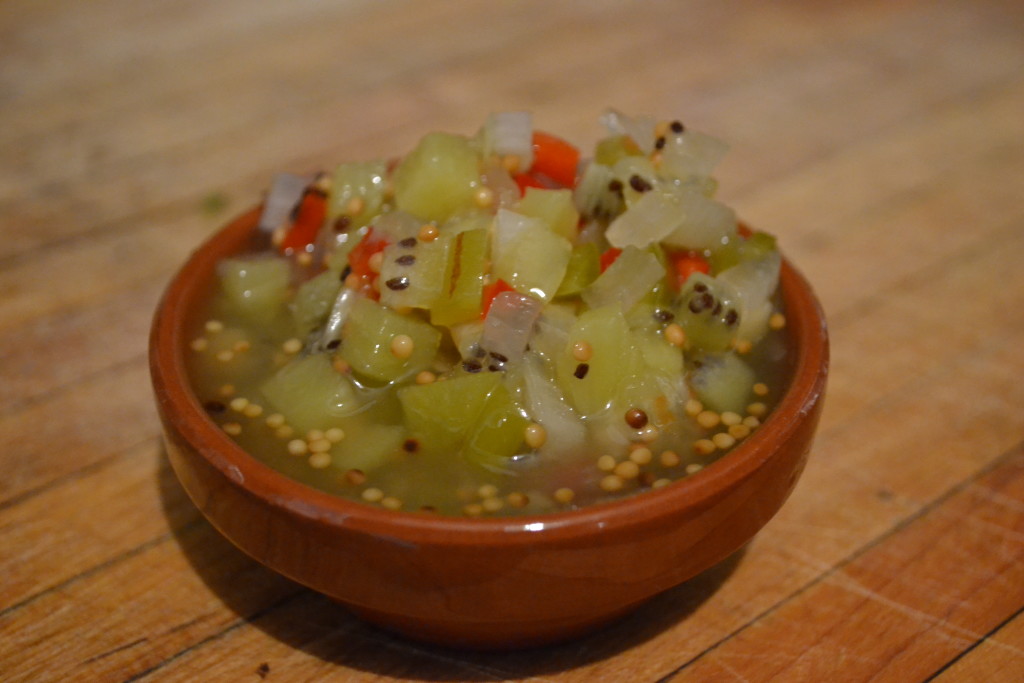Latest Posts
Proofed and Ready to Print
This book, Don’t Fry for Me Argentina, is a collection of stories, conversations, and more about life after having moved to Argentina – some of it adapted from here on the blog, some from other published work, and some wholly new. The book includes two dozen of my versions of both classic and modern Argentine recipes, and basically is a mix of travel reader, cultural viewpoint and, hopefully, just some fun.
When in … Buenos Aires
It’s an ever changing thing to answer the question, “What’s your favorite… X?” It’s also probably the most common question I get asked both by e-mail and in person by guests at Casa S. Recently, luxury travel magazine The Address asked me the same and gave me a whole bunch of pages to answer the question. And so I did. Click here to read the article.
Pasta magic
On Sunday supplement
Food and Wine
As Federico Fellini once said, “Life is a combination of magic and pasta.” The word pasta comes from the Italian word for paste, what the dough for making pasta looks like before it is kneaded and formed into its different final shapes. Basically, pasta comes in two types – fresh and dried – both generally easy to find in markets. Dried pasta is usually available in a wide array of shapes, while fresh pastas tend to be more limited in shape.
Because fresh pasta virtually always contains eggs, it is almost always found refrigerated or frozen. It is more delicate than dried, softer, and takes less time to cook. Because it already contains moisture it doesn’t swell much during cooking, it also will not be as al dente, or slightly firm, as it starts out fairly soft, though a pinch of baking soda can add to its texture. It also has a limited “shelf life” – 3-4 days in the refrigerator, maybe 6-8 weeks in the freezer. Because of the eggs it is higher in nutrition than many dried pastas that don’t contain egg, and the fat content of the egg also helps carry flavor better – which is why fresh pastas take so well to the addition of strong flavors like garlic, chilies and herbs.
Dried pasta can be stored pretty much indefinitely, as long as it is in a sealed package (not because it will go stale when opened, but being a wheat based product tends to attract bugs of one sort or another once opened). It does not require refrigeration or freezing. It takes longer to cook, and swells significantly during cooking. Unless completely overcooked, it will maintain an al dente, or firm texture, so works well with heavier sauces that contain meats or vegetables.
At its most basic, pasta is made with flour and water. Eggs, salt, and other additions, or substitutions on the liquid, are common. The type of flour affects both nutritional content and flavor of the pasta. The most common flours used are semolina, unbleached white, and whole wheat. Semolina is ground from a hard durum wheat, has a high gluten content, making the dough very elastic, which lends itself to both ease of shaping and holding a shape, and therefore is used for a lot of dried pastas. Unbleached white flour is ground from red winter wheat and produces a lighter dough that is easy to work with, especially for fresh pastas (here in Buenos Aires this is usually labeled as 000 flour). Whole wheat is more of a health choice, it isn’t particularly a tradition, and produces a nuttier tasting, heavier textured pasta that combines well with rustic flavors like chickpeas, nuts, and mushrooms, or as a nice foil to something like a veal cream sauce.
Today I thought I’d share one of our simplest pasta recipes and a household favorite, Pici alle Briciole, or “pici” (the shape) with breadcrumbs.
220 gm semolina flour
220 gm all-purpose flour (000 or 0000)
260 ml of tepid water (approximately)
Pici, or pinci, is “poor people’s pasta” – it is a thick, irregular, hand rolled strand pasta, usually served with a simple sauce or seasoning.
Mix the flours together in a large bowl. Make a well in the center of the flour mixture and add the water a little at a time, stirring with your hands until a dough is formed. You may need more or less water, depending on the humidity in your kitchen, the particular type of flour, etc. Place the dough on a floured work surface and knead it like bread until smooth and elastic, about 8 to 10 minutes. You can, of course, do this in a mixer with a dough hook if you have one. Cover the dough and let it stand for 10 minutes at room temperature.
Roll the dough into long dowels about 1 cm thick. Place the pasta strands between your hands and lightly roll back and forth to create a lightly spiraled, snake-like noodle. Place the pici on a sheet tray that has been dusted with semolina flour, cover with a clean dish towel, and set aside until ready to use. At this point, the pasta can be frozen for several months. This quantity makes 4 main course servings.
When ready to cook, simply boil in salted water for about 4 minutes until they swell up slightly and are al dente when you try them.
4 garlic cloves, chopped
hot peppers, thinly sliced or chopped (traditionally, equal in volume to the garlic)
60 gm breadcrumbs
60 ml olive oil
salt and pepper
Saute the garlic and peppers in the oil until just starting to turn golden. Add the breadcrumbs, continue cooking for another minute. Add the pasta, already cooked, and toss with the sauce. Season to taste with salt and pepper.
A series of recipes and articles that I started writing for the Buenos Aires Herald Sunday supplement, Food & Wine section, at the beginning of 2012. My original proposal to them was to take local favorite dishes and classics and lighten them up for modern day sensibilities. We’re not talking spa or diet recipes, but at the very least, making them healthier in content, particularly salt, fat and portion size. As time went by, that morphed into a recipe column that, while emphasizing food that is relatively “good for you”, wasn’t necessarily focused on local cuisine. At the beginning of 2013 I decided to stop writing for them over some administrative issues, but it was fun while it lasted.
What’s sauce for the veal is sauce for the eggplant
On Sunday supplement
Food and Wine
Around the world, anywhere there are Italians, you’re likely to find Vitello tonnato, that classic dish of slices of cold poached veal topped with a creamy tuna sauce. It’s one of those dishes that seems like it must go back in history to some far distant, early epoch. Different regions of Italy claim it as their own. Italian cooking authority (in English), Ada Boni, asserts it as a Lombardian dish but doesn’t delve into it. As best anyone seems to have researched it, the dish goes back to the late 19th century and although it likely graced the tables of fine restaurants in Milan, it also graced those of other regions.
Beyond the combination of veal (and traditionally, we’re talking unweaned calf, milk fed veal, not naturally raised veal) and tuna, all is fair game in both presentation and condiments. Oh, there are traditions, but they are often bent, stretched or ignored – egg yolk, capers or caper berries, lemons, chilies, and more come into play. Some insist the veal be roasted, others braised. Some cook the veal with all its condiments and then turn the juices into the sauce, others keep them separate. Some assert that the sauce be ladled over the veal well in advance to mingle the flavours, others prefer to keep them separate, even to serving them side by side.
Here in Argentina the dish is known as Vitel thoné, (also “toné or tonné”) I’ve found no history as to why it’s called this. Neither word is Spanish, neither word is Italian (where tonno would be the spelling, or tonni in plural). If anything it vaguely stretches to Latin, where “vitel” is the diminutive form the word for “yolk” and is sometimes used to refer to a very young calf; and thoné and its variations, well, your guess is as good as mine. In various languages it could refer to a unit of weight or a clap of thunder.
Having just toddled our way through the holidays, many of us have eaten our fill, not just of this particular dish, but of more meat than we probably should have, despite the carnivorous traditions of this country’s cuisine. One of the nice things about the development of cuisine is that over time, classic sauces, like a tonnato sauce, come to be used for other dishes. And, today, I’ll hit you up with a cold salad that makes a great starter to a light dinner.
If you really want to do this up right, make your own mayonnaise with olive oil, or to go more traditional, blend all the sauce ingredients together with a yolk and then slowly whisk in olive oil until you get the texture you want. It’s summertime, we want quick and easy. Use some olive oil mayo – there are some perfectly good commercial brands available.
Eggplant “Tonnato”
1 large eggplant
16 cherry tomatoes
small baguette, 1-2 days old is best
olive oil
1 170gm can tuna, drained (roughly 120 gm tuna)
100 ml olive oil mayonnaise
1 teaspoon capers, rinsed
2 anchovies
1-2 teaspoons of chili sauce (a sambal or sriracha would be best)
1 green lemon, cut in quarters
chives, chopped
parsley, chopped
salt and pepper
Slice the eggplant into 1 cm thick slices, salt and leave to drain in a colander for 30 minutes. Rinse, pat dry. In a skillet over high heat brown the lemon quarters on both exposed sides. Set aside. Add olive oil to the pan and brown the eggplant slices until cooked through.
Meanwhile, place the cherry tomatoes with a little olive oil and salt in the oven and cook until they just start to burst (you can also do this on the stovetop).
Cut the crust off the baguette and cut the bread in cubes, drizzle with olive oil, sprinkle with salt, and bake in the oven until crisp and golden brown. Let all the ingredients cool to room temperature.
Put the tuna, mayo, capers, anchovies, chili sauce into a blender and blend until smooth. Season to taste with salt and pepper. Chill in the refrigerator for about an hour to let the flavors meld.
Toss the eggplant with the chopped parsley and divide up between four serving bowls. Distribute the cherry tomatoes around to look pretty. Spoon the sauce over the top, sprinkle with chives, add in a couple of croutons for some crunch, garnish with the charred lemon wedge. Dig in!
A series of recipes and articles that I started writing for the Buenos Aires Herald Sunday supplement, Food & Wine section, at the beginning of 2012. My original proposal to them was to take local favorite dishes and classics and lighten them up for modern day sensibilities. We’re not talking spa or diet recipes, but at the very least, making them healthier in content, particularly salt, fat and portion size. As time went by, that morphed into a recipe column that, while emphasizing food that is relatively “good for you”, wasn’t necessarily focused on local cuisine. At the beginning of 2013 I decided to stop writing for them over some administrative issues, but it was fun while it lasted.
Pork n’ chocolate
On Sunday supplement
Food and Wine
We joke about the ubiquitousness of dulce de leche here, wondering when the first restaurant is going to offer up a steak or innards with some sort of caramel sweet sauce preparation. But we often don’t think about how much we use sweet ingredients in our own cooking, wherever we may be from. Sometimes it’s fruit, sometimes it’s honey or sugar. It might be a sweet and sour or sweet and spicy sauce – but the Argentines wouldn’t be the first to cross that line in the sugar sand.
Even in my own culinary background the use of chocolate and/or cocoa is not unheard of. A touch of powdered cocoa in pasta, especially with a game or mushroom dish, is not uncommon in Italian cooking. On the American Jewish side we’ve got our version of the classic German pumpernickel, chock-ful of cocoa and molasses to give it that dark, rich color and hint of sweetness and bitterness all in one. South of our border our Mexican neighbors have been adding cocoa or chocolate to dishes for eons, the most famous being some of the varieties of moles on offer.
I have yet, however, to encounter an Argentine recipe making use of either cocoa or chocolate in a savory dish. That’s not to say they don’t exist and I’m up for hearing about them, I just haven’t encountered them. But I could see a bit of either being added to a classic regional stew like a locro or carbonada. Some experimentation is in order, no doubt.
With the New Year holiday coming up this week, I thought I’d trot out a favorite holiday dish from the Sardinian repertoire. Bistecchine di Cinghiale – Wild Boar Steaks in a Sweet-Sour Sauce – is one that goes back to antiquity, in the days when it was its own kingdom. Okay, not really, since cocoa beans weren’t introduced to Europe until well past that period, but it goes back awhile, like maybe the mid-19th century. Now, not all of us have a source of wild boar – jabaliacute; – here, and since I rarely find it, or when I do it’s prohibitively expensive, I make this dish with thick steaks cut from the bondiola – the pork shoulder (or on the American side, called the pork butt). The flavour’s not as intense, nor, obviously, gamey, but it’s delicious nonetheless.
Bistecchine di Cinghiale – Wild Boar Steaks in a Sweet-Sour Sauce
1 kg boar steaks (pork shoulder steaks can be substituted)
6 tablespoons olive oil
250 gm bacon, finely chopped\
salt
4 tablespoons sugar
4 bay leaves
300 ml red wine vinegar
100 gm yellow raisins, seedless if available
100 gm pitted prunes or apricots
100 gm dark chocolate, grated
pinch of cinnamon and/or nutmeg
4 teaspoons flour
Saute the bacon in oil over low heat. Brown the steaks in the olive oil on both sides, sprinkle with the salt and leave to cook gently for 15 minutes.
In a saucepan put the sugar, bay, and 2/3 of the vinegar and cook, stirring, over low heat until the sugar has dissolved. Add the fruit, chocolate and spice and cook until the sauce has thickened, about 10 minutes.
Meanwhile, mix the flour with the remaining vinegar and pour over the steaks, continue cooking 10 more minutes.
Add in the sauce and cook 10 minutes more, turning regularly to keep the steaks well coated. Serves four as a main course.
I recommend serving the dish with a side of gnocchi or, if you want to get more authentic, you could, perhaps, find the classic Sardinian malloreddus pasta – though unlikely, I’ve not seen it here, however, I do see cassareccia pasta here which is pretty similar and will work just fine.
A series of recipes and articles that I started writing for the Buenos Aires Herald Sunday supplement, Food & Wine section, at the beginning of 2012. My original proposal to them was to take local favorite dishes and classics and lighten them up for modern day sensibilities. We’re not talking spa or diet recipes, but at the very least, making them healthier in content, particularly salt, fat and portion size. As time went by, that morphed into a recipe column that, while emphasizing food that is relatively “good for you”, wasn’t necessarily focused on local cuisine. At the beginning of 2013 I decided to stop writing for them over some administrative issues, but it was fun while it lasted.
1 in 7 fishes recommend
On Sunday supplement
Food and Wine
Having grown up in a household where Christmas was not celebrated, I had no tradition of particular holiday dishes associated with it. Oh, now and again I was invited to a friend’s house for a Christmas dinner, to be presented with, generally, either turkey, or what euphemistically we all agreed to call “pink chicken”, a classic cured ham, but a tacit agreement not to let my parents know I was eating pork.
As a teen I went to work in a neighbor’s Italian restaurant – our focus was pizza, with a secondary emphasis on pasta, and pretty much that’s what we made for the holidays – there weren’t even any special versions. But, as I continued my career and Italian restaurants figured strongly in the background, I learned about the “seven fishes” – which are sometimes nine or eleven or thirteen or three – but seven seemed a nice number to focus on. And as long as shellfish were included, it was always easy to come up with a septet to present at a Navidad dinner.
Now I suppose, if I’m going to give you a favourite or two for the upcoming Christmas holiday, I should have given you my best latkes and roast chicken with lemon sauce for recently passed Chanukah. But, I didn’t, mea culpa. We’ll have to move forward and focus on the fruits of the sea for this 2000 and something-th birthday celebration.
This dish actually is inspired from the Greek canon, but I’ve never heard anyone object that it didn’t seem Italian to them. Pretty much other than the choice of cheese in the dish, it could fit either cuisine.
Prawns with Feta & Spicy Tomato Sauce
100 ml olive oil
4 garlic cloves, minced
2-3 fresh red chilies
6 tomatoes, skinned and chopped
1 medium bunch parsley, chopped
4 Italian frying peppers (ají vinagres), seeded and sliced
1 kg raw prawns or shrimp, peeled and deveined
250 grams feta cheese, crumbled
salt and pepper
Heat olive oil in a frying pan, add garlic, tomatoes, parsley, chilies and sweet peppers and simmer 10 minutes over low heat. Add the shrimp and simmer 10 more minutes. Season to taste with salt and pepper. How simple is that? Crumble the feta over the top and put it into a hot oven for 15 minutes to melt the cheese and slightly brown it. Serves 4.
I regularly get asked about the whole “deveining” of prawns or shrimp. No, you don’t have to, but keep in mind that that black line running down the back of the critter is, to put it only semi-delicately, its poop-shoot. Your choice if that doesn’t bother you to eat it.
You might not know the pomfret, or, you might not know the pompano, different names for very closely related fish species, depending on which side of the Atlantic pond you live(d) on. Here, it’s called palometa, or often, supposedly as a marketing tactic, atún del mar del plata. It’s not a tuna, trust me.
Baked Pomfret
4 fillets pomfret/pompano
100 gm bacon, diced in small cubes and quickly cooked
12 green olives, chopped
6-8 stalks parsley, chopped
4 cloves garlic, chopped
100 gm breadcrumbs
1-2 teaspoons red pepper flakes (depending on if you like it spicy)
salt and pepper
olive oil
Place each fillet skin side down on an oiled baking sheet. Make a mixture of the other ingredients except the oil, coat each fillet with a layer, drizzle with olive oil. Broil in a very hot oven. Serves 4.
If you can find dried Italian peperoncino, which sometimes show up in the supermarkets or dieteticas here, they’re even better than the local red pepper flakes – but use a bit more sparingly, they’re much spicier – 3-4 of the little chilies will likely be plenty.
A series of recipes and articles that I started writing for the Buenos Aires Herald Sunday supplement, Food & Wine section, at the beginning of 2012. My original proposal to them was to take local favorite dishes and classics and lighten them up for modern day sensibilities. We’re not talking spa or diet recipes, but at the very least, making them healthier in content, particularly salt, fat and portion size. As time went by, that morphed into a recipe column that, while emphasizing food that is relatively “good for you”, wasn’t necessarily focused on local cuisine. At the beginning of 2013 I decided to stop writing for them over some administrative issues, but it was fun while it lasted.
In a pickle
On Sunday supplement
Food and Wine
Like many people in the food business I’m often asked what my favourite “X” is, be it a restaurant, a wine, an ingredient, or, pretty much anything, like, say, a “green vegetable”. My response to the last is simple. A good pickle. Closely followed by an olive. I realize that in and of themselves they’re not a green vegetable in natural state, but sometimes a bit of tweaking is needed to bring out the best in even something that Mother Nature provides.
When it comes down to it, I love pickled and brined sorts of things, be they corned beef or cucumbers or, something entirely different. But I’ll bet you didn’t know there’s a whole science behind it. Pickling, brining, corning, are all names for a process that involves preserving food through anaerobic fermentation in brine (i.e., salt dissolved in liquid) to produce lactic acid and/or marinating it in an acidic solution – most often vinegar, though that’s not a prerequisite. The result is some form of pickle with a salty and sour taste.
One particularly important aspect of the process is that the resulting pickle has an acidity level that drops below a pH of 4.6 – not to get too scientific or anything – but what makes that important is that it’s a sufficiently low pH to kill off pretty much any bacteria that are harmful to us human folk.
Rather than give you a recipe for some classic dill, half-sour, garlic-dill, or bread & butter pickle, much as many of us miss those, I thought I’d slip in a couple of favourites that we keep around the house, particularly during the summer as they make great accompaniments to many of the foods we eat during the hot months. And, they’re both really easy to make.
Watermelon Rind Pickle
Rind from half a large watermelon
4 cups sugar
2 cups white vinegar
1 tablespoon each of fennel seed, star anise, szechuan peppercorns
1 teaspoon cloves
2-3 whole cinnamon sticks
2 tablespoons coarse salt
This is a great way to use the leftover rind of a watermelon. Basically scoop out the pink flesh almost down to the rind. Peel the outer layer of skin off the rind. Cut in cubes roughly 1½-2 cm. In a pot that’s large enough to accommodate all the cubes of rind, bring the other ingredients to a boil, stirring occasionally to dissolve all the sugar. Turn off the heat, load in the cubes of rind which should be pretty much level with the liquid – mix well, cover, and leave for 10-12 hours.
Bring the whole potful back up to a boil over high heat, cover again and leave for another 10-12 hours. Repeat once or twice more until the pickles are soft with just a little crunch left – basically this is a two day process. When cooled after the last boiling ladle them into containers and store in the refrigerator. Watermelon rind pickles pair brilliantly well with grilled meats. Try them as something different from the usual accompaniments of salsa criolla and chimichurri.
Kiwi Relish
4 kiwis
1 onion
1 small green bell pepper
1 small red bell pepper
100 grams salt
225 grams sugar
160 ml vinegar
1 teaspoon celery seed
1 teaspoon mustard seed
Peel and dice the kiwis into a very small dice, about ½ cm. Dice the onion and peppers the same size. Place all the ingredients in a pot, bring to a boil, turn off the heat, cover, and leave for 6-8 hours before using. Makes a fantastic pairing with fish (amazing with salmon) and chicken – again, right off the grill during the summer is one of our favourites. Also can be used in place of a traditional pickle relish on sandwiches, hot dogs, hamburgers… you name it.
A series of recipes and articles that I started writing for the Buenos Aires Herald Sunday supplement, Food & Wine section, at the beginning of 2012. My original proposal to them was to take local favorite dishes and classics and lighten them up for modern day sensibilities. We’re not talking spa or diet recipes, but at the very least, making them healthier in content, particularly salt, fat and portion size. As time went by, that morphed into a recipe column that, while emphasizing food that is relatively “good for you”, wasn’t necessarily focused on local cuisine. At the beginning of 2013 I decided to stop writing for them over some administrative issues, but it was fun while it lasted.
